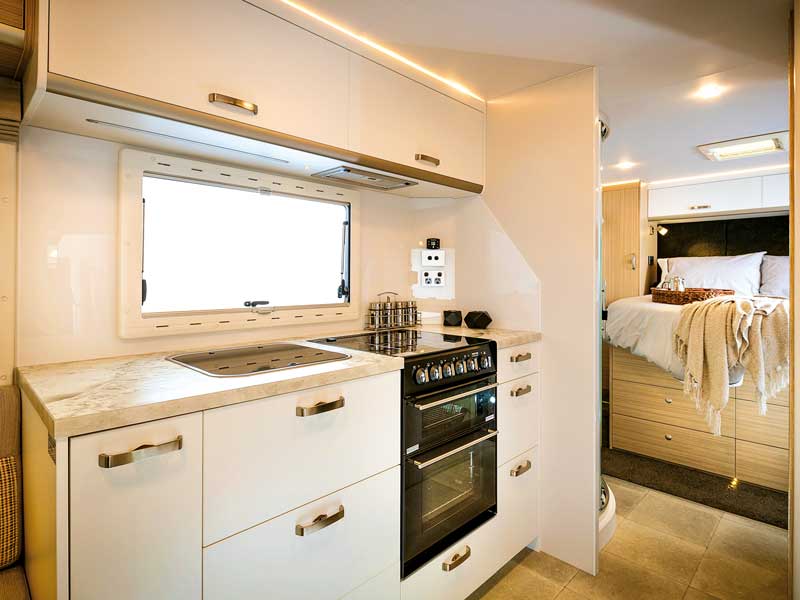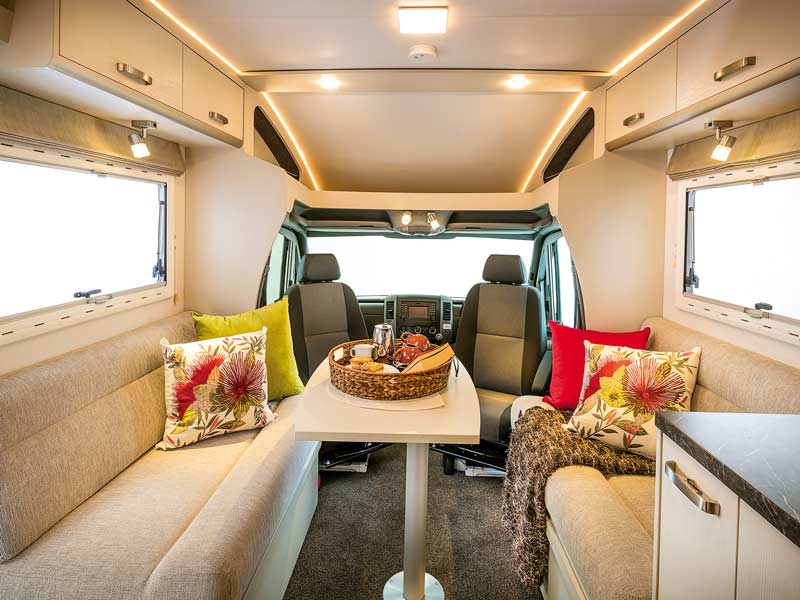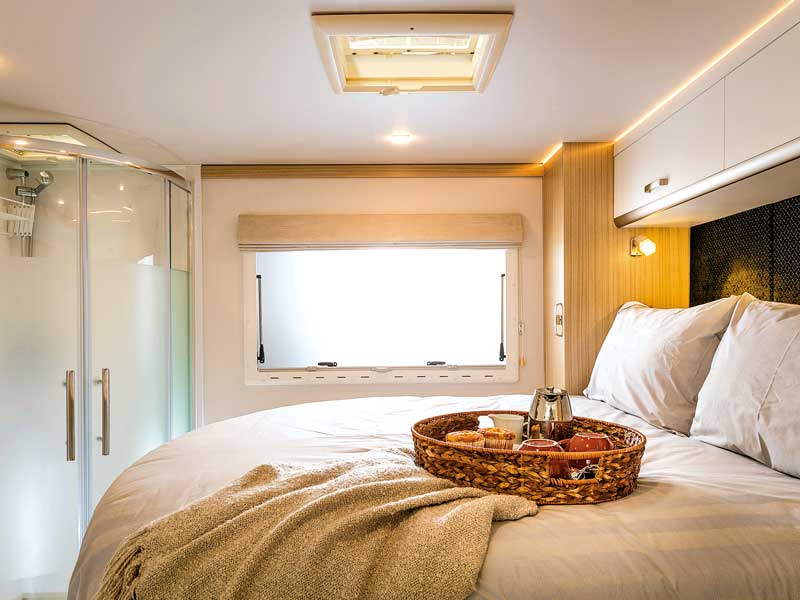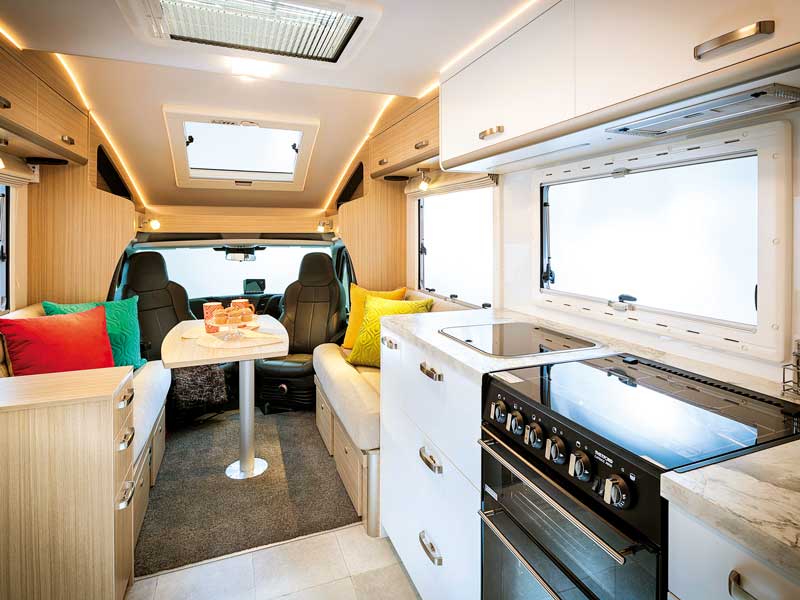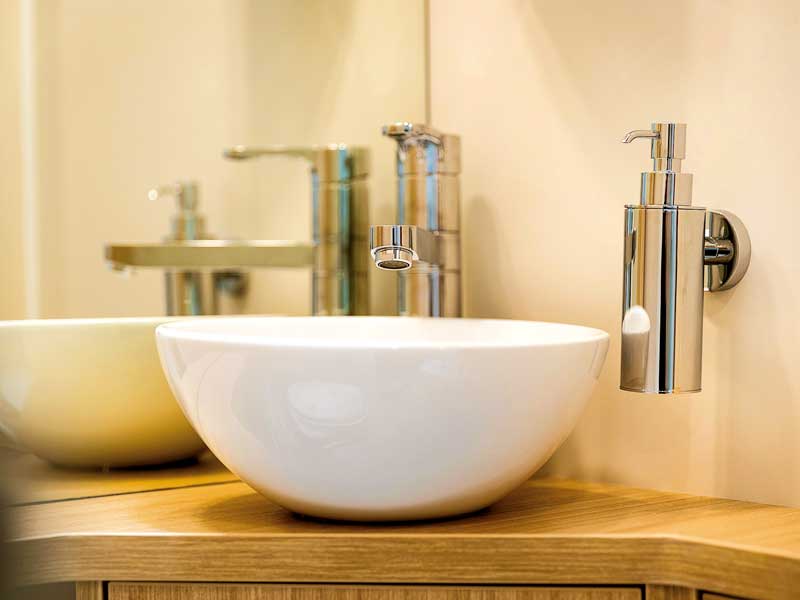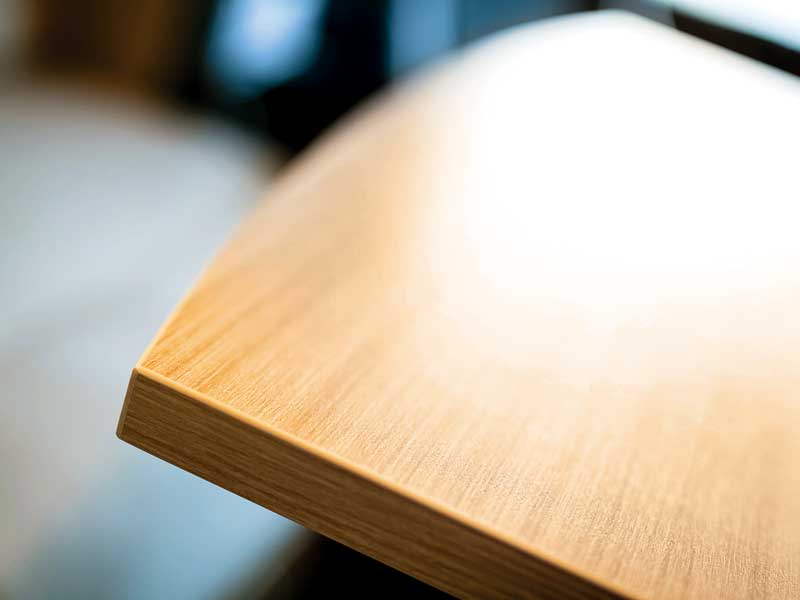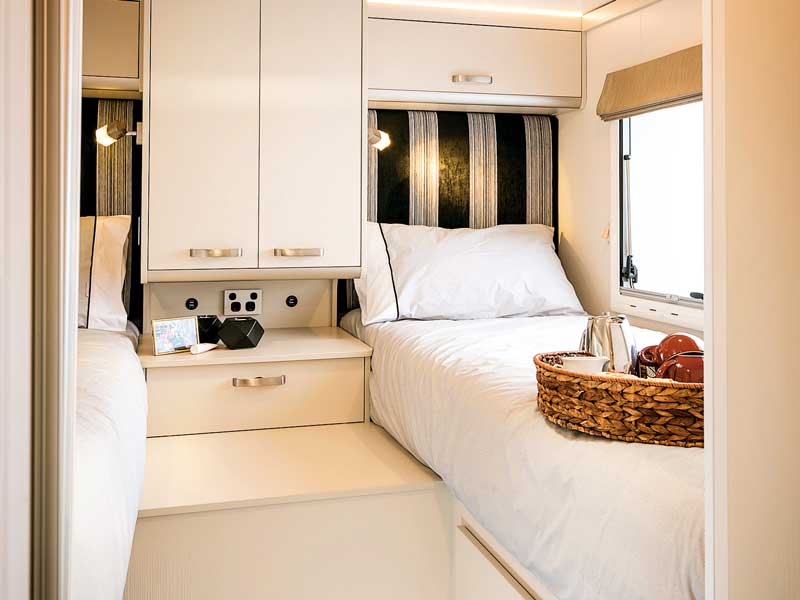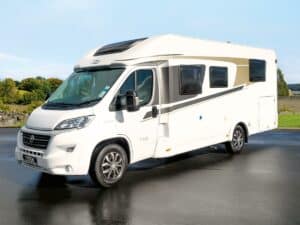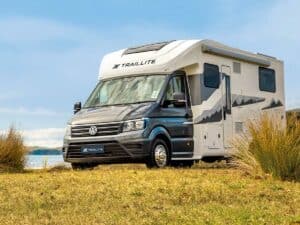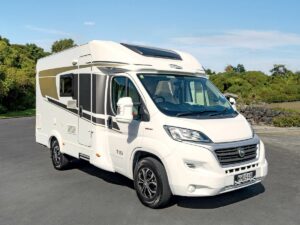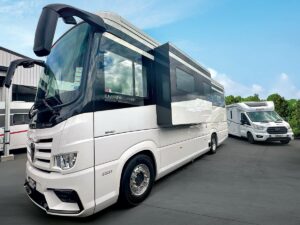While New Zealand motorhome manufacturer TrailLite is well-known for its programmes of continual improvement, 2017 marks something of a departure for the company. A combination of a host of new technologies and designs culminating at once, along with the addition of two new models for 2017, means that for the first time TrailLite is launching new model year upgrades across its four series lines.
“We came up with a wider plan for an array of changes for 2017, which is the first time our R&D team has sat down and looked at every aspect of our range all at once,” TrailLite general manager, Shaun Newman, says. “A vital part of this
R&D process was customer feedback; we engineered a process through which TrailLite owners could comment to us on what they like about their motorhome, what they don’t like and what little details, if any, they’d change. These are people who take their motorhomes out on the road and experience New Zealand in them, so their opinions are incredibly important.
“As a company, we don’t have a traditional sales agent-based structure. This means that everyone inside this building has a direct line to our customers, and I think that’s a very powerful advantage to have when looking to make changes to our product offering,” he says.
One of the biggest advances across the wider TrailLite range is the adoption of a clever new electronic touchscreen control centre, from which almost everything in the motorhome can be controlled. The display unit acts as a master switch panel for interior and exterior lighting, water level monitoring and slide-out deployment on relevant models.
In top-of-the-line Landmark grade motorhomes, the electronic control system even allows the owner to lock and unlock kitchenette drawers. It is also linkable to the owner’s smartphone through an app, meaning that, for example, outside lights can be switched on remotely if occupants are returning to the motorhome later than expected. Water and battery levels can be checked remotely too.
“I was looking at the kind of touchscreen technology now available in many passenger cars, and I thought it is inevitable our industry will start to adopt this kind of technology too,” Shaun continues.
“We programme in manufacturer settings during the pre-delivery check regime, but actually the system is very modifiable for customers, so tailoring the touchscreen and what certain buttons do is pretty simple.
“We used to hide big banks of switches away in cupboards because they spoiled the overall look of our motorhomes’ interiors. But the touchscreen fits in unobtrusively with the modern motorhome living space, which adds to its ease-of-use as well,” he says.
The electronic touchscreen control centre is just one of the many updates for the TrailLite range though. In fact, taken together, the slew of updates presents one of those ‘where do we start?’ challenges.
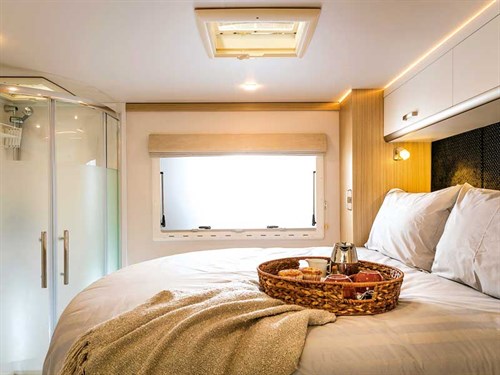
Let’s start with the two new additions to the range. Built on a Mercedes-Benz chassis, the Matakana 545 is the new TrailLite 500 Series entry-point and builds on a developing trend for shorter motorhomes. At 7.1m long, it’s the most compact motorhome of its type. The footprint reduction is possible thanks to an east-west drop-down bed (the 7.6m long Matakana 550 with fixed north-south bed remains on offer too).
The Matakana 545 features an all-new interior; four new décor options, new cabinet handles, benchtop surfaces and other fixtures take centre stage, while the bathroom space has been redesigned with an angled toilet, so the door is now easier to close when occupied.
Part of the larger 700 Series, the all-new Iveco-underpinned Wanaka showcases further new features, such as a full-wall slide-out (extending the entire length of one wall) which adds a huge amount of floor space to the motorhome, new exterior graphics packages to choose from and another wider-ranging update in TrailLite’s new facilities management locker, where waste and water management controls are tidily packaged away. This also frees up remaining underfloor storage cubbies for other uses.
“These two new models really stand-out for me because they’re the first two models we have designed purely on the computer before we started production,” Shaun says.
“We’ve been able to trial a number of configurations in order to get everything right inside the computer, rather than the longer process of physical prototyping. The results are that much more precise and took less time to achieve as well, so it’s a significant step forward for us as a company.”
In addition to diesel heaters now being available across the range, all models also feature upgraded water capacities. The 300 and 500 Series’ now boast 275-litre capacities, while the 700 Series models now feature 400-litre fresh and 220-litre grey water capacities. Meanwhile, the big 900 Series models now have up to 600 litres of water capacity on board, making them true long-range explorer vehicles.
Key improvements that are the result of audience feedback include a mudflap on the entry step, designed to reduce the amount of road grime and dirt that catches on the step and risks being tracked through the interior after driving, along with a system of four low wattage nightlights to help guide your way through the living space at night while in search of that glass of water or when heeding nature’s call.
“We are very proud of all of these updates to the range and it’s a fantastic opportunity to roll them out to our customers at the Covi show this year,” Shaun says.
“The motorhome market continues to be buoyant and we’re seeing a variety of TrailLite motorhomes being purchased by a widening audience, so we can’t sit still. We need to be continually developing new interior features, more modern trim levels and other clever solutions that make life on the road enjoyable.
“We’re really taking our motorhomes to the next level.”


